The dos and don’ts of DMEK
Surgeons share helpful tips for making the transition to Descemet's membrane endothelial keratoplasty.
Corneal transplantation for endothelial decompensation with otherwise clear corneal stroma has transitioned from full-thickness penetrating keratoplasty to endothelial keratoplasty, which encompasses both Descemet’s stripping endothelial keratoplasty and Descemet’s membrane endothelial keratoplasty. Although DSEK has been the primary choice for endothelial keratoplasty, DMEK has continued to gain in popularity among corneal surgeons both in the United States and globally.
Some of the factors that contribute to the popularity of DMEK may be attributed to the availability of ready-to-use prescreened donor Descemet’s membrane with healthy donor endothelium, various surgeon-friendly Descemet’s membrane delivery systems, and somewhat simplified surgical techniques. These factors, by themselves or in combination, have somewhat propelled the conversion of some corneal surgeons from DSEK to DMEK.
Use of eye bank technician-prepared healthy donor corneal Descemet’s membrane, with healthy endothelium, eliminates for the most part surgeon preparation of the donor tissue in the operating room. Such pre-prepared donor corneal tissue has decreased the intraoperative time for endothelial keratoplasty in general, and DMEK in particular, while increasing the overall surgical cost of the procedure. However, some corneal surgeons continue to prepare their own surgical donor tissue in the operating room.
Once the donor tissue is introduced within the recipient anterior chamber, the surgical objectives include proper orientation of the donor Descemet’s membrane disc, unrolling the Descemet’s membrane scroll, minimizing iatrogenic endothelial cell loss, increasing the visualization of the Descemet’s membrane through the cloudy recipient cornea by dye-assisted staining of the Descemet’s membrane, and the use of effective fluidics within the anterior chamber, combined with mechanical maneuvers on the external surface of the corneal dome, all of which help in unrolling the Descemet’s membrane. Next, confirmation of the proper orientation, namely, endothelial surface facing the iris surface, is essential before the last step of air-assisted attachment of the donor Descemet’s membrane to the inner central bare stroma of the recipient cornea.
Although DMEK has come a long way with a more simplified procedure, there are still challenging areas for both less experienced and more experienced DMEK surgeons.
In this column, Drs. Parker and Melles cover many surgical pearls and guidelines for DMEK surgery. These tips should be useful in completing DMEK surgery and avoiding some of the potential surgical complications associated with endothelial keratoplasty in general and DMEK in particular.
Thomas “TJ” John, MD
OSN Surgical Maneuvers Editor


Descemet’s membrane endothelial keratoplasty is steadily becoming the globally preferred treatment option for patients with corneal endothelial disorders. Not every surgeon has made the switch, however, and the reason cited often is the perceived technical difficulty of the operation. Here, we provide our tips and tricks for a successful transition to DMEK, specifically, the “dos and don’ts” of the operation.
Do strip the host Descemet’s membrane ‘under air’
Air affords better contrast and visibility compared with saline, which enables the host Descemet’s membrane to be stripped completely, without leaving remnants behind, which is important because remnants may both undermine the optical performance of the graft and interfere with its adherence (Figure 1). Likewise, avoid the use of a saline-emitting anterior chamber maintainer during the operation because overhydrating the posterior cornea may also reduce the tendency for the graft to attach to the posterior cornea.
Don’t roughen the posterior cornea
DMEK grafts are more sensitive to posterior corneal irregularities than DSEK lenticules. As a result, the posterior cornea should be kept undisturbed; otherwise, detachments are more common. Also, avoiding stromal irregularities may be more critical for the visual outcome because higher acuities are obtained after DMEK. Likewise, care should be taken that the graft does not overlap the main wound or side-port incisions for the same reasons.
Do rinse and stain the graft appropriately before implantation
In the United States, human donor corneal tissues are delivered from eye banks floating in Optisol, while in Europe, organ culture is the preferred medium. However, Optisol is viscous and slippery and proven to interfere with graft adherence, so it must be thoroughly irrigated away before the tissue is implanted.
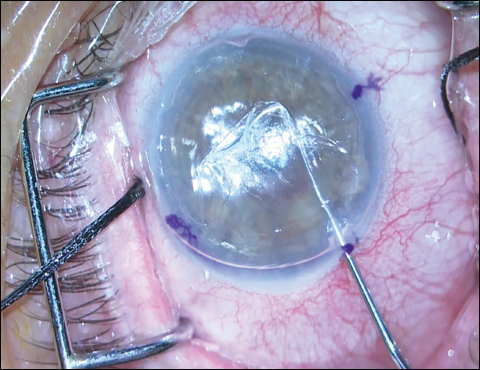
Source: Jack Parker, MD, PhD, and Gerrit R.J. Melles, MD, PhD
Once the graft is well rinsed, it should be deeply stained with trypan blue; the duration of the stain is important, and we prefer two cycles of 30 to 60 seconds each. Overstaining tends to render the graft tighter and more difficult to unroll, whereas understaining runs the risk of premature de-coloration in the anterior chamber. Paradoxically, DMEK grafts are more difficult to see in eyes with dark brown irides compared with blue; therefore, we tend to err on the side of overstaining when operating on these patients.
Don’t over pressurize the eye when injecting the graft
The eye should be soft before injecting the donor tissue, and the main wound should leak around the injector during implantation; this keeps the eye soft during graft delivery and eliminates the expulsive force that threatens to spit the graft out of the eye once the injector is withdrawn. During injection, aim the graft into the angle, away from the pupil, to prevent inadvertent delivery of the donor tissue posterior to the iris (Figure 2).
Do obtain a double roll before injecting the tissue

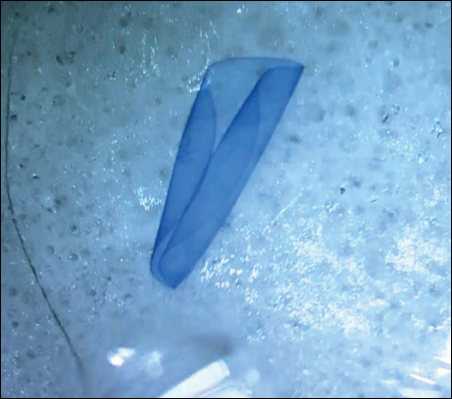
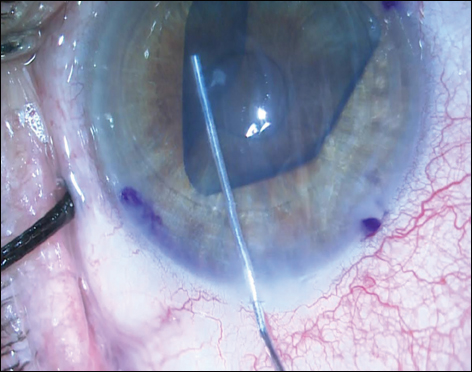
Unquestionably, the graft is easier to unfold in the eye if it has a double-roll conformation, and the easiest time to obtain this conformation is before injecting the graft into the eye in the first place. Gentle bursts of saline across the graft surface while the tissue is still floating outside the eye can encourage this edge configuration to form (Figure 3). This is the single most important helpful step for successful DMEK unfolding, and its importance cannot be emphasized enough.
Don’t forget to check the graft orientation
Implanting the graft upside down is a bad mistake and easy to do, so always check that the graft is right-side up before lifting it. The easiest way to do this is with the Moutsouris sign, while the graft is still mostly curled up (ie, before it has been unrolled). Checking the orientation in this phase takes a few seconds and avoids a lot of unnecessary manipulation (Figure 4).
Do use elongated cannulas
Longer cannulas permit more precise injections of both saline and air during the operation; this makes your actions much more effective and controlled. Accept no stubby substitutes (Figure 5).
Don’t inject too many air bubbles
In the overwhelming majority of instances, one is the maximum number of bubbles to have in the eye at a time. After that, the bubbles tend to compete with each other for influence over the graft (Figure 6). If you have more than one bubble in the eye, stop, and return the number to one before proceeding with further efforts.
Do leave the eye at a physiologic pressure at the end of surgery
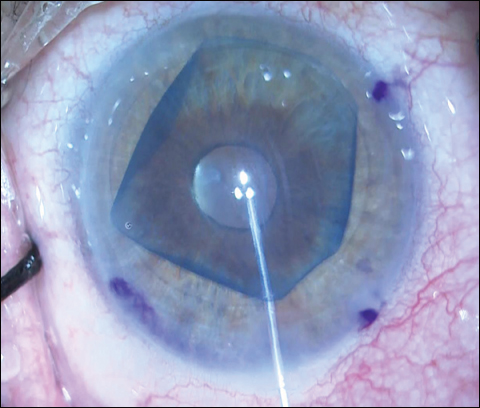
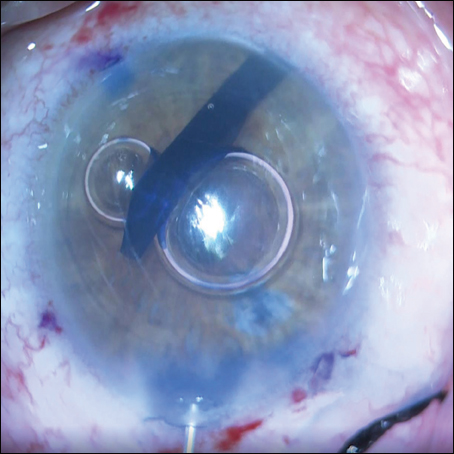

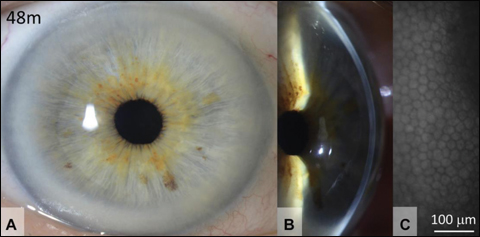
The temptation is strong, but higher pressures do not stick the graft to the posterior cornea better and probably damage the cell population that you just worked so hard to apply. Also, avoid leaving the eye hypotonous — otherwise, the graft may be blinked off the back of the eye (Figure 7).
The final dos and don’ts are do start with DMEK and don’t give up. Like any operation, there is a learning curve. But if this were your eye, and you were the patient, this is the surgery that you would want (Figure 8).
- References:
- Dapena I, et al. Arch Ophthalmol. 2011;doi:10.1001/archophthalmol.2010.334.
- Laaser K, et al. Am J Ophthalmol. 2011;doi:10.1016/j.ajo.2010.11.027.
- Park CY, et al. Ophthalmology. 2015;doi:10.1016/j.ophtha.2015.08.017.
- Schmeckenbächer N, et al. Cornea. 2017;doi:10.1097/ICO.0000000000001055.
- For more information:
- Gerrit R.J. Melles, MD, PhD, is founder of the Netherlands Institute for Innovative Ocular Surgery. He can be reached at NIIOS, Laan Op Zuid 88, 3071 AA Rotterdam, Netherlands; email: melles@niios.nl.
- Thomas “TJ” John, MD, is a clinical associate professor at Loyola University at Chicago, and is in private practice in Oak Brook, Tinley Park and Oak Lawn, Illinois. He can be reached at email: tjcornea@gmail.com.
Disclosures: Melles reports he is a consultant for DORC International/Dutch Ophthalmic USA and SurgiCube International. Parker reports he is a consultant for DORC International/Dutch Ophthalmic USA and Ziemer Ophthalmic Systems. John reports he is a consultant for Bausch + Lomb.
